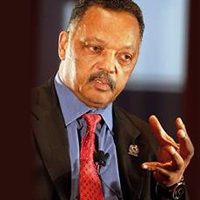
July 27 marked the 66th anniversary of the signing of the Korean War armistice, which brought an end to hostilities that killed nearly five million people, including almost 40,000 U.S. service members.
The war ended in a temporary cease-fire, which is why the United States still maintains 28,500 troops in South Korea. Nuclear missiles ring the region and threaten the people living there. North and South remain divided, separating thousands of families.
To this day, a formal peace treaty has not been signed.
There has been no official end to the war.
As a servant of God for civil rights and economic justice at home, and peace and human rights abroad, I believe we must take the path to peace, reconciliation and eventual reunification of the Korean Peninsula.
Last year to commemorate the anniversary of the armistice, I led a prayer vigil near the Demilitarized Zone that cuts across the Korean Peninsula. I prayed: “It is healing time — a time to turn our pain into power. A power to bring about family reunification.
A power to end this decades-long conflict and bring peace to Korea. It’s due time to step away from the brink of war and talks of nuclear strikes and seize this opportunity to push for talk of peace.
The current peace process in Korea has both historic potential and challenges.
At first President Donald Trump threatened to unleash “fire and fury.” This rhetoric has been replaced with dialogue between North Korean Chairman Kim Jong-Un and Trump, although fundamental differences persist and a permanent solution remains elusive.
Peace is a process, not a single act.
I believe it’s time to turn the armistice into a formal, lasting peace agreement. This could be the catalyst to a phased approach to denuclearization whereby the United States and North Korea take mutual steps to eliminate their nuclear weapons in and around the Korean Peninsula and move toward normalization.
Kim has halted nuclear weapons testing and offered to close the country’s nuclear test site. Last summer, North Korea returned 55 boxes of remains believed to be of U.S. troops killed during the Korean War.
In a resolution following his speech to the North Korean ruling party’s Central Committee in April, Kim pledged North Korea would never “use nuclear weapons nor transfer nuclear weapons or nuclear technology under any circumstances unless there are nuclear threats and nuclear provocations against the DPRK.”
It’s appropriate and desirable, in honor of the Panmunjom Declaration signed by South Korean President Moon Jae-in and North Korean Chairman Kim Jong-un in 2018, to have, as the agreement states, “trilateral meetings involving the two Koreas and the United States, or quadrilateral meetings involving the two Koreas, the United States and China” to complete their unfinished business of “declaring an end to the War, turning the armistice into a peace treaty, and establishing a permanent and solid peace regime.”
Many in South Korea, including President Moon, see this as the key to all other issues, including the complete denuclearization of the Korean Peninsula, normalization of relations and North-South reconciliation.
I believe the current process can lead to a fundamental resolution of the U.S.-North Korean conflict. It should not be thwarted by hawkish pundits who seek to keep the Cold War hot.
Congressional leaders on both sides cast aspersions on the Trump-Kim summits and insist that North Korean denuclearization must be the first — if not the only — objective in U.S.-North Korean negotiations. Trump’s national security adviser, John Bolton, a war hawk who has argued for “regime change” — has said North Korea should follow the “Libya model” in denuclearizing.
And we must be ever-mindful of Trump, whose meeting with Kim holds promise and possibility but who has a propensity for head-spinning reversals of direction.
Now the U.S.-South Korean military exercises scheduled for next month threaten to derail plans for working-level talks between the U.S. and North Korea. Last week, the North Korean Foreign Ministry warned that North Korea may resume nuclear and long- range missile testing if the United States goes ahead with the exercise.
By now, we should know there are no winners in war. Military exercises only increase the possibility of conflict and make progress toward peace more challenging. For the talks between the U.S. and North Korea to succeed, we must maintain the “freeze for freeze” — a halt to both North Korea’s nuclear and missile tests, as well as the U.S.-South Korea joint military exercises.
And declaring an end to the nearly 70-year-old Korean War should be a priority for both sides.
According to James Laney, former U.S. ambassador to South Korea, “A Peace Treaty would provide a baseline for relationships, eliminating the question of the other’s legitimacy and its right to exist.”
A reconciled and reconnected Korea would represent a new hope in the world. But it will require that we use all the tools at our disposal: moral persuasion, rational arguments, nonviolent direct action and protests, economic, political and diplomatic leverage, education and revival of hope among people of the world.
In the 66th year of the armistice, I renew my prayer for an end to the Korean War. Let us have the courage, conviction and conscience to talk it out and not fight it out, and choose mutual co-existence over co-annihilation.
Let us reunite families.
Let us have peace, co-prosperity and a world without war.










